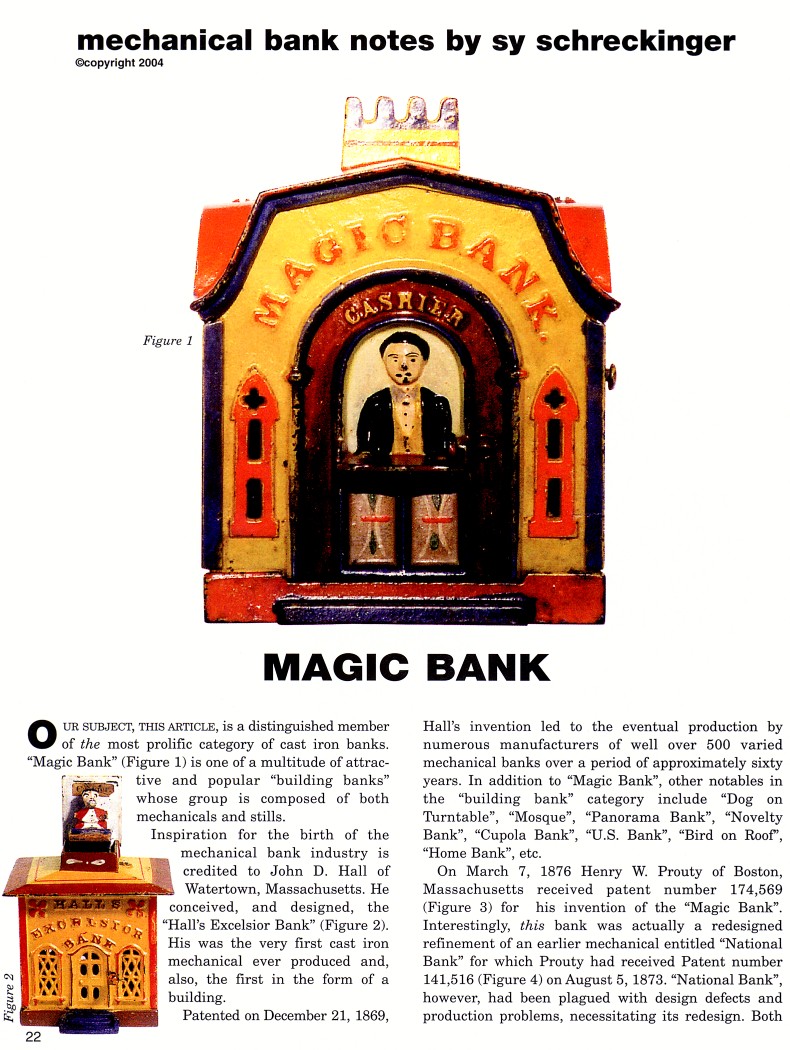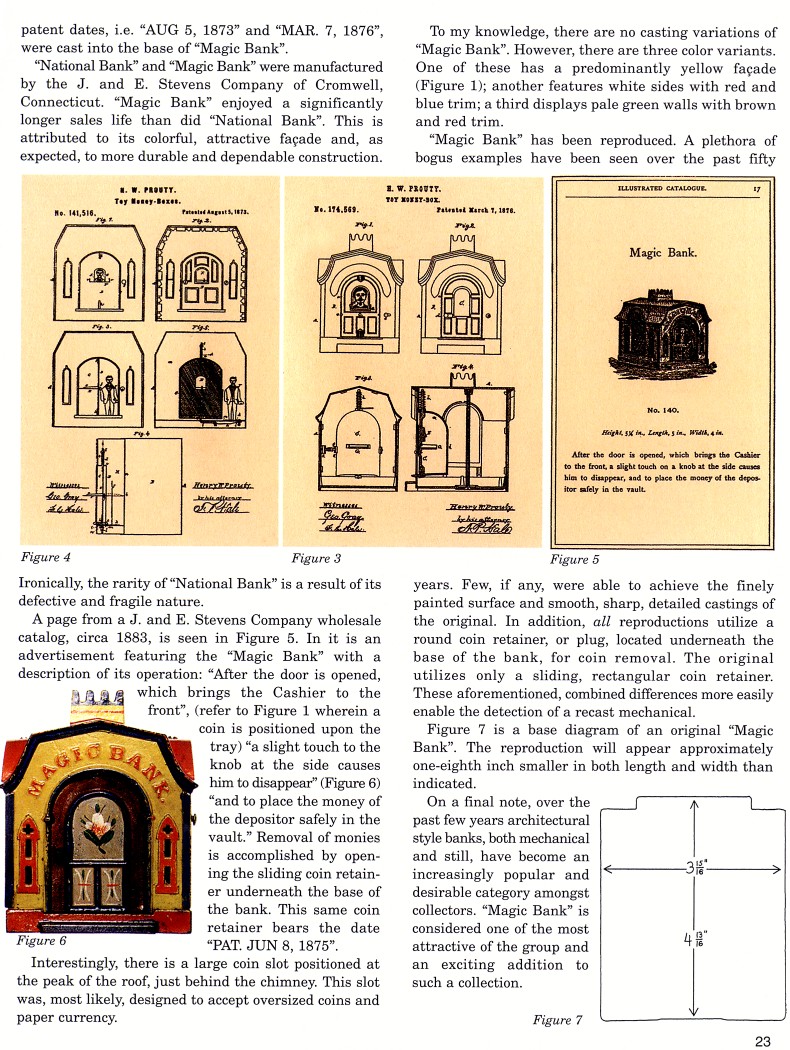|
Magic Bank
by Sy Schreckinger – ANTIQUE TOY WORLD Magazine – April, 2004
Our subject, this article, is a distinguished
member of the most prolific category of cast iron banks. "Magic Bank"
(Figure 1) is one of a multitude of attractive and popular "building
banks" whose group is composed of both mechanicals and stills.
Inspiration for the birth of the mechanical bank industry is credited
to John D. Hall of Watertown, Massachusetts. He conceived, and designed,
the "Hall's Excelsior Bank" (Figure 2). His was the very first cast iron
mechanical ever produced and, also, the first in the form of a building.
Patented on December 21, 1869, Hall's invention led to the eventual
production by numerous manufacturers of well over 500 varied mechanical
banks over a period of approximately sixty years. In addition to "Magic
Bank", other notables in the "building bank" category include "Dog on
Turntable", "Mosque", "Panorama Bank", "Novelty Bank", "Cupola Bank",
"U.S. Bank", "Bird on Roof', "Home Bank", etc.
On March 7, 1876 Henry W. Prouty of Boston, Massachusetts received
patent number
174,569 (Figure 3) for his invention of the "Magic Bank".
Interestingly, this bank was actually a redesigned refinement of an
earlier mechanical entitled "National Bank" for which Prouty had received
Patent number
141,516 (Figure 4) on August 5, 1873. "National Bank",
however, had been plagued with design defects and production problems,
necessitating its redesign. Both patent dates, i.e. "AUG 5, 1873" and
"MAR. 7, 1876", were cast into the base of "Magic Bank".
"National Bank" and "Magic Bank" were manufactured by the J. and E.
Stevens Company of Cromwell, Connecticut. "Magic Bank" enjoyed a
significantly longer sales life than did "National Bank". This is
attributed to its colorful, attractive facade and, as expected, to more
durable and dependable construction. Ironically, the rarity of "National
Bank" is a result of its defective and fragile nature.
A page from a J. and E. Stevens Company wholesale catalog, circa
1883, is seen in Figure 5. In it is an advertisement featuring the "Magic
Bank" with a description of its operation: "After the door is opened,
which brings the Cashier to the front", (refer to Figure 1 wherein a coin
is positioned upon the tray) "a slight touch to the knob at the side
causes him to disappear" (Figure 6) "and to place the money of the
depositor safely in the vault." Removal of monies is accomplished by
opening the sliding coin retainer underneath the base of the bank. This
same coin retainer bears the date "PAT. JUN 8, 1875".
Interestingly, there is a large coin slot positioned at the peak of
the roof, just behind the chimney. This slot was, most likely, designed to
accept oversized coins and paper currency.
To my knowledge, there are no casting variations of "Magic Bank".
However, there are three color variants. One of these has a predominantly
yellow facade (Figure 1); another features white sides with red and blue
trim; a third displays pale green walls with brown and red trim.
"Magic Bank" has been reproduced. A plethora of bogus examples have
been seen over the past fifty years. Few, if any, were able to achieve the
finely painted surface and smooth, sharp, detailed castings of the
original. In addition, all reproductions utilize a round coin retainer, or
plug, located underneath the base of the bank, for coin removal. The
original utilizes only a sliding, rectangular coin retainer. These
aforementioned, combined differences more easily enable the detection of a
recast mechanical.
Figure 7 is a base diagram of an original "Magic Bank". The
reproduction will appear approximately one-eighth inch smaller in both
length and width than indicated.
On a final note, over the past few years architectural style banks,
both mechanical and still, have become an increasingly popular and
desirable category amongst collectors. "Magic Bank" is considered one of
the most attractive of the group and an exciting addition to such a
collection.
|


